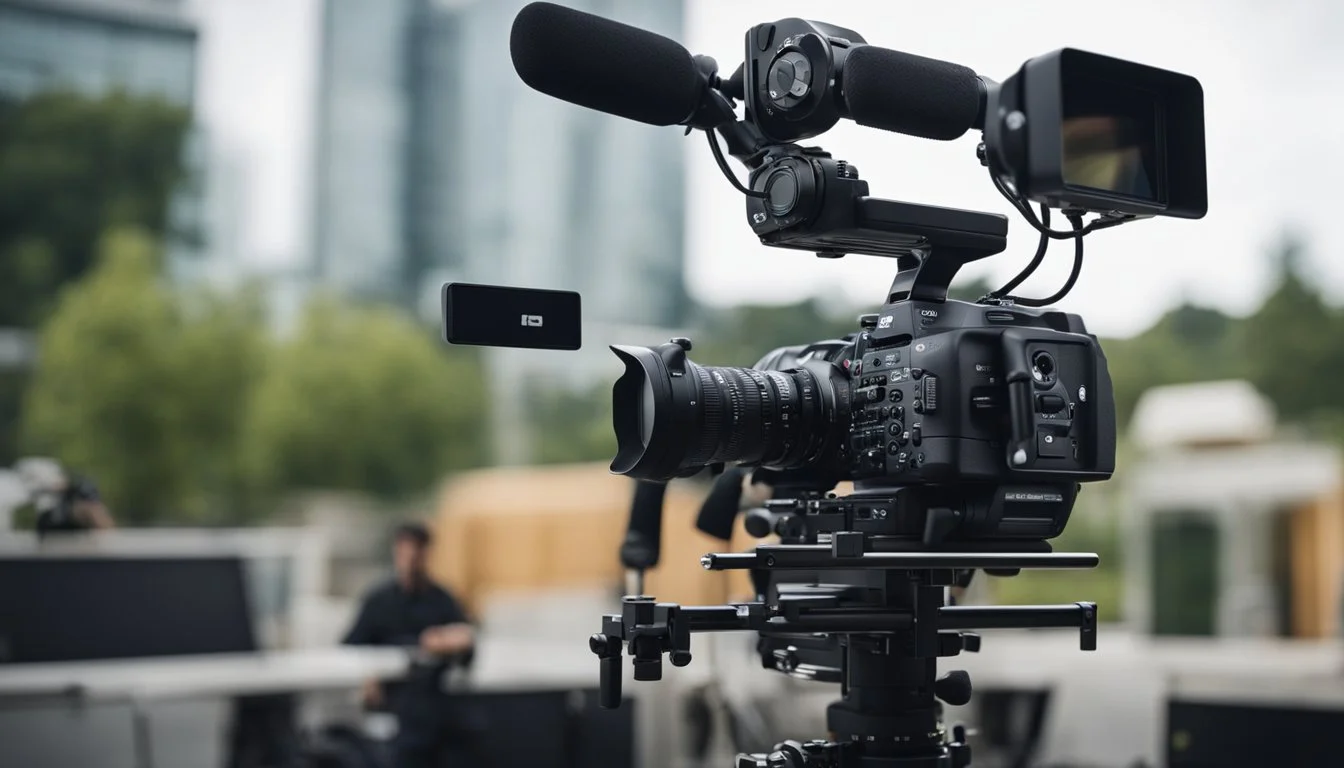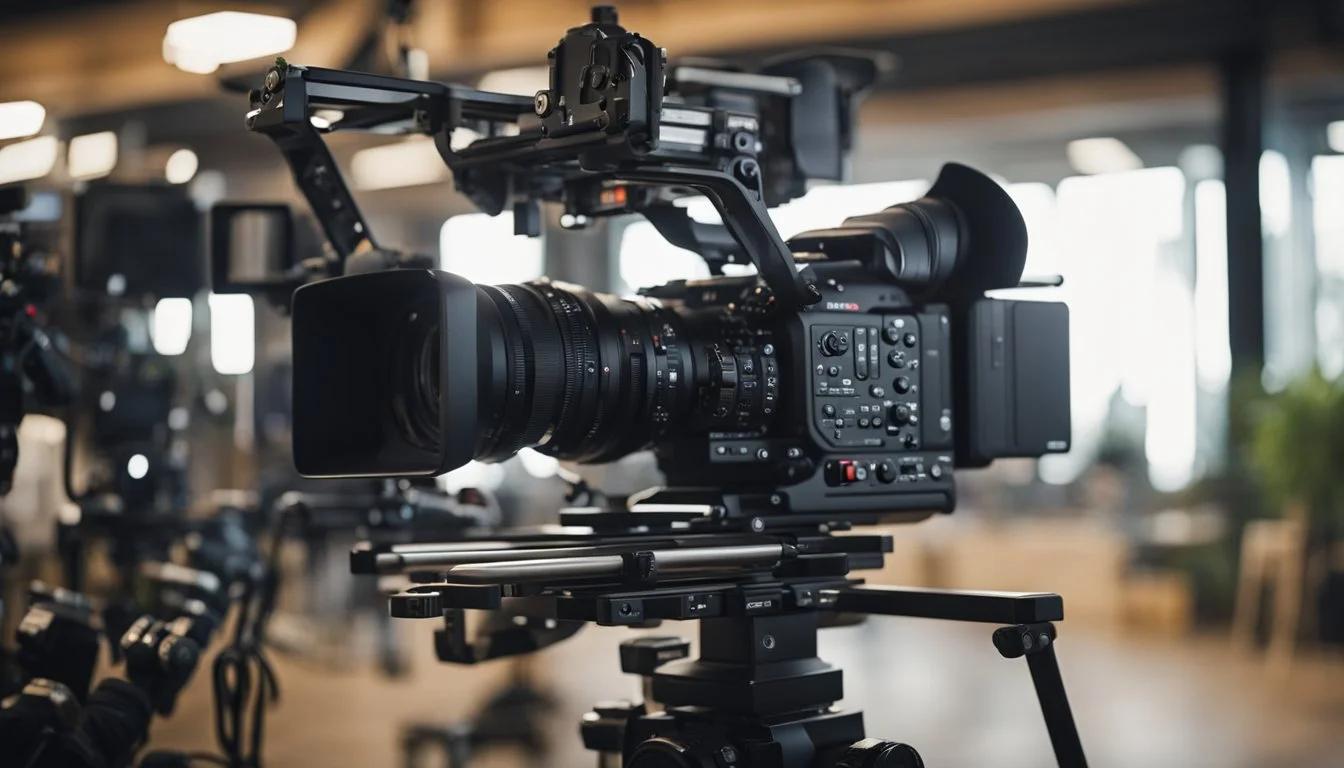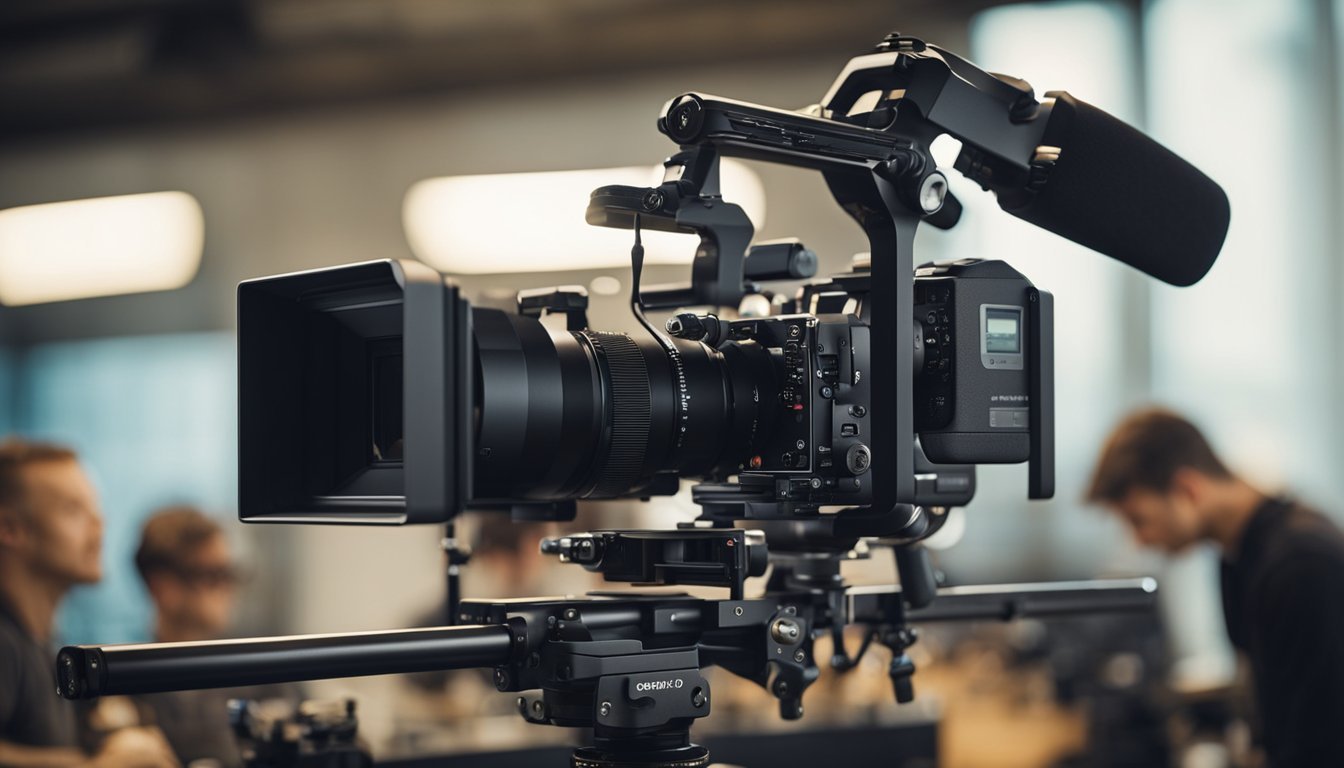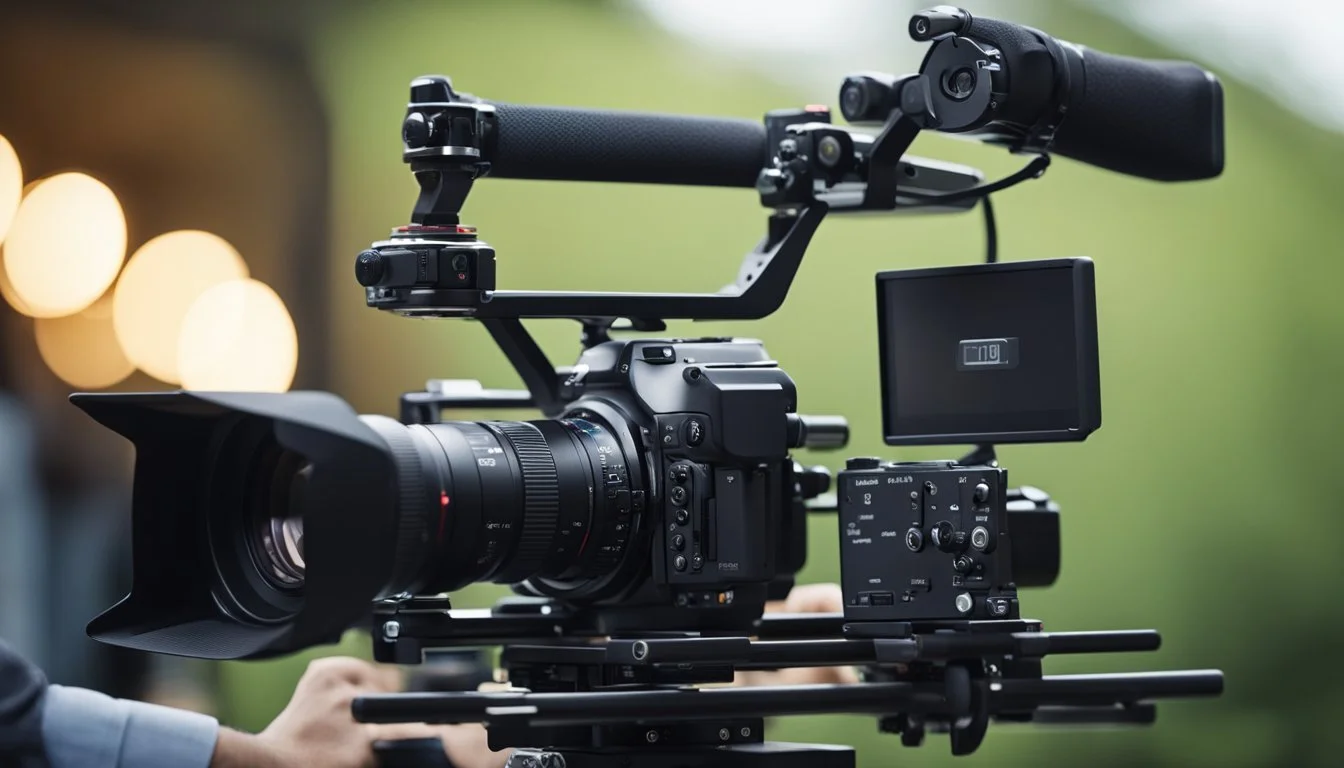The Role of the Key Grip
Expert Handling of Camera Support Equipment on Set
Key grips play an essential role on film sets, ensuring that every shot is executed smoothly and safely. A key grip's primary responsibility is to set up and operate camera support equipment. This includes tripods, dollies, tracks, and cranes, which are vital for achieving the director's vision. By working closely with the director of photography and other crew members, key grips ensure that the camera and lighting setups enhance the visual storytelling of the film.
In addition to their technical expertise, key grips are problem solvers, adapting to the dynamic needs of a film set. They craft solutions for unique shot requirements, seamlessly integrating their equipment with the overall production workflow. Their ability to manage and mobilize gear efficiently is crucial for keeping the production on schedule.
The importance of the key grip extends beyond mere logistics. Their work ensures that camera movements are fluid and lighting setups are secure, contributing significantly to the film’s aesthetic quality. This often unseen role is a cornerstone of a successful film production, underpinning the visual elements that captivate the audience.
Key Grip Responsibilities
The key grip is a pivotal figure on a film set. She is in charge of the grip department, coordinating the rigging and operating of camera support equipment.
Grips handle non-electric setups. Tasks include setting up dollies, cranes, and camera mounts.
They ensure stability and safety for all camera movements, working closely with the director of photography and cinematographer.
During pre-production, the key grip conducts location scouts, identifying potential challenges. He devises technical plans to address these obstacles.
In addition to rigging, they may also assist in creating specialized setups, such as car rigs or complex tracking shots, ensuring the equipment is appropriately placed and secure.
Key tasks include:
Rigging camera mounts
Building dolly tracks
Setting up cranes and jibs
Technical planning and troubleshooting
By ensuring that all gear and equipment are in optimal working condition, the key grip plays a crucial role in achieving the desired shot.
Building Camera Support Equipment
Building camera support equipment involves understanding the vision of the director, designing custom rigs to meet specific shot requirements, constructing dolly tracks for smooth camera movement, and assembling cranes and jibs. Each task requires precision, technical know-how, and a keen eye for detail.
Understanding Scripts and Director's Vision
A pivotal first step is understanding the script and the director's vision. The key grip must interpret the director's plans and storyboard visuals to determine the equipment needed. They discuss the shooting style, whether it’s steady, dynamic, or requires complex camera movements. This helps in anticipating the needs for specific shots and preparing the right gear in advance.
Designing Custom Rigs
Designing custom rigs is essential for shots that cannot be achieved with standard equipment. The key grip collaborates with the director of photography to design and build rigs that fit unique filming requirements. These rigs provide solutions for unconventional camera angles and shots. Creativity and problem-solving skills are crucial as each custom rig must support the camera securely while ensuring smooth operation.
Constructing Dolly Tracks
Constructing dolly tracks is key for capturing smooth, fluid motion shots. The key grip oversees the layout and assembly of the tracks to ensure they are level and stable. They handle different types of dolly systems, such as linear tracks and curved tracks, depending on the shot requirements. The precision in tracking builds significantly impacts the fluidity and stability of the camera motion.
Assembling Cranes and Jibs
Assembling cranes and jibs allows for elevated and sweeping shots, adding dynamic range to the visual storytelling. The key grip ensures all components are securely assembled and balanced. They select the right type and size of crane or jib, considering the camera’s weight and the desired reach of the shot. Safety checks are conducted multiple times to guarantee the stability and safety of the equipment.
Operating Camera Support Equipment
Key grips play a critical role in managing devices that ensure stable and dynamic camera movements. Their expertise in handling various equipment directly influences the quality of the film's visual presentation.
Dynamic Camera Movements
Key grips often use devices like dollies, cranes, and tracks to enable fluid camera motion.
Dollies are wheeled platforms that provide smooth horizontal movement, essential for scenes that require following or tracking shots.
Cranes allow for vertically sweeping shots, giving a grand, aerial perspective when needed.
Tracks guide camera dollies along a set path, ensuring linear motion without deviation.
Careful planning and skillful operation of these tools create visually engaging scenes that maintain the viewer's interest.
Ensuring Smooth Operations
Smooth equipment operation is vital to prevent jerky or erratic camera movements. Key grips collaborate closely with the camera crew to synchronize movements and adjust equipment for optimal performance.
Routine maintenance checks on equipment help avoid technical issues during filming, ensuring all parts function seamlessly.
By prioritizing smooth operations, key grips maintain the film's visual flow and continuity, reducing the need for multiple takes or extensive post-processing adjustments.
Camera Stability and Precision
Stability and precision in camera positioning are fundamental to high-quality footage. Tripods, stabilizers, and gimbals are among the key tools used.
Tripods are vital for stationary shots, offering a stable base that keeps the camera fixed on a specific subject.
Stabilizers and gimbals counterbalance any unwanted camera motion while allowing for fluid movement, essential for capturing action scenes or following characters through complex environments.
Accurate equipment placement by the key grip ensures that shots are well-composed and steady, contributing to the film's overall professional appearance.
Their role in meticulously setting up and adjusting these tools underlines their importance in the production process.
Collaboration and Communication
The role of the key grip requires constant interaction with various departments on set. Effective communication and collaboration are vital to ensure the smooth operation of a film shoot.
Working with Cinematographers
Key grips often work directly with cinematographers to achieve the desired visual effects. This collaboration includes discussing shot requirements, such as angles and movements.
The key grip's expertise ensures that camera rigs, cranes, and dollies are set up correctly. They help to bring the cinematographer's vision to life by providing stable and flexible camera support.
Communication is crucial; they must clearly understand the cinematographer's goals and adapt setups to meet these needs.
Coordinating with Grips and Electricians
A key grip manages a team of grips responsible for rigging and supporting camera and lighting equipment. They also coordinate closely with the electricians, or "gaffers."
This coordination includes scheduling and task delegation to ensure all equipment is properly set up, maintained, and moved when necessary. The key grip ensures that both departments work harmoniously together.
By fostering clear communication, the key grip helps prevent delays and technical issues, ensuring a smoother production process.
Interpreting Technical Requirements
Key grips must interpret and implement complex technical requirements provided by the film's director or cinematographer. This includes understanding the specific needs for camera movements and lighting setups.
They often work from detailed plans, blueprints, and shot lists. Their ability to read and execute these plans accurately is critical to the film's visual quality.
Additionally, they may need to troubleshoot technical issues on the fly, requiring in-depth knowledge of the equipment and an ability to think quickly. Effective collaboration ensures these requirements are met with precision and efficiency.
On-Set Safety and Protocol
Ensuring on-set safety involves adhering to established standards, conducting thorough risk assessments, and having clear emergency procedures to protect the crew and equipment.
Safety Standards Compliance
Key grips must follow industry-specific safety standards to maintain a hazard-free environment. Compliance with guidelines set by organizations such as OSHA ensures that all operations meet strict safety criteria. Proper use of safety gear like helmets, gloves, and harnesses is mandated.
Detailed training sessions are essential. Grips should be well-versed in safe handling procedures for various equipment, from heavy cranes to smaller rigging tools. Regular safety audits and checklists help to identify potential risks and maintain compliance.
Risk Assessment for Equipment Setup
Risk assessments are critical when setting up camera support equipment. Each rigging task begins with evaluating potential hazards that could compromise safety. Identifying load-bearing capacities and the stability of structures is paramount.
Grips often use tools like load cells to measure the weight and stress on rigging points. They must also assess the terrain and weather conditions. Continuous monitoring and adjustment of equipment setups ensure that any changes in conditions are managed proactively, reducing risks effectively.
Emergency Procedures
Having well-defined emergency procedures is crucial for on-set safety. The key grip should establish clear protocols for various emergencies, such as equipment failures, falls, or fires.
Emergency response plans need to include specific roles and responsibilities. For instance, who will operate fire extinguishers, administer first aid, or call for external emergency services. Frequent emergency drills ensure that the grip department and the entire crew can respond swiftly and efficiently if an incident occurs.
A detailed emergency contact list should be readily available, and all team members must know the location of safety equipment such as first aid kits, fire extinguishers, and emergency exits.
Equipment Maintenance and Management
Maintaining and managing equipment is a critical responsibility for a key grip to ensure smooth operations on a film set. This involves systematic inspection, prompt repairing, and meticulous inventory tracking.
Routine Inspection and Repair
Regular inspection of camera support equipment is essential to identify any wear and tear. Key grips should check for loose screws, worn-out parts, and damaged cables.
Utilizing a detailed checklist, they can systematically evaluate each piece of equipment. Immediate repair of minor issues, such as tightening bolts or replacing worn-out parts, prevents bigger problems. For more complex issues, consulting with specialized technicians is advised.
Scheduled maintenance sessions should be adhered to, ensuring that equipment is always in optimal working condition, reducing downtime during filming.
Inventory Tracking
Effective inventory management ensures that all equipment is accounted for and readily available. Using software tools or meticulously maintained spreadsheets allows for real-time tracking of gear.
Key grips should catalog each item, including details like serial numbers, purchase dates, and maintenance records. Keeping an updated log helps in quickly locating equipment and identifying if something is missing or requires servicing.
Conducting regular stock checks ensures that the inventory system remains accurate and that all necessary equipment is functioning and ready for use. Maintaining detailed records also helps in planning future purchases and budget management.
Professional Development and Training
Developing expertise as a key grip requires continuous learning and hands-on practice. Technological advancements, skill-building opportunities, and mentorship practices are crucial for maintaining proficiency in this role.
Staying Updated with Technology
Technological advancements in the film industry are rapid. Key grips must stay informed about new equipment and software that enhance efficiency and safety on set.
Keeping abreast with updates involves reading industry publications, attending trade shows, and participating in online forums. This helps key grips familiarize themselves with cutting-edge tools like automated dolly systems or innovative lighting support structures. Regular training sessions provided by equipment manufacturers can provide in-depth knowledge about the latest machinery and gear.
Skill Building Workshops
Skill-building workshops are essential for key grips to refine and expand their abilities. These workshops often cover specific techniques, such as advanced rigging methods, safe handling of heavy equipment, and emergency procedures.
Participation in workshops led by seasoned professionals offers practical experience. Aspiring key grips can benefit from hands-on practice with various tools and setups in simulated production environments. Moreover, many workshops include certifications that validate the key grip’s competencies, making them more appealing to potential employers.
Mentoring New Crew Members
Experienced key grips often play a vital role in mentoring new crew members. This mentorship ensures the transfer of practical skills and industry knowledge to the next generation.
Newcomers can learn about on-set etiquette, efficient problem-solving, and the nuances of different camera support techniques through one-on-one guidance. Seasoned key grips can provide insights into managing a crew, coordinating with other departments, and effective communication. Structured mentoring programs within film production companies can formalize this learning process, ensuring comprehensive development for new grips.
Challenges of the Role
Key grips face numerous challenges that require them to be adaptable, resilient, and capable of managing their time efficiently. These challenges are often influenced by the demands of different film genres, the physical and environmental conditions on set, and the tight schedules that are typical of film production.
Adapting to Different Genres and Styles
Key grips must adjust their techniques and equipment based on the genre and style of the film.
In a high-action film, they might need to work with complex rigging and rapidly-moving camera setups. For a drama, the focus might be on achieving subtle, steady shots that require precision.
The shift from one genre to another demands flexibility and a broad knowledge of different filming techniques. They often need to collaborate with other departments to ensure the desired visual effects are achievable.
By being versatile, key grips ensure that the director's vision is realized, regardless of the genre.
Physical and Environmental Challenges
Working on set often involves physically demanding tasks. Key grips are required to move heavy equipment, set up rigs, and operate machinery that demands strength and endurance.
Environmental conditions can further complicate their work. They might need to operate in extreme temperatures, whether hot or cold, or deal with inclement weather conditions.
Sets can range from controlled indoor studios to unpredictable outdoor locations, adding another layer of complexity. Safety is a major concern, as working with heavy equipment and in varied terrains can increase the risk of accidents. They must consistently prioritize safe practices while maintaining efficiency.
Time Management and Deadlines
The film industry operates on tight schedules. Key grips must adhere to strict deadlines to ensure that scenes are shot within the allotted time frame.
They frequently work under pressure, knowing that any delay can have a domino effect on the entire production. Effective time management is crucial, as they need to coordinate the setup and teardown of equipment rapidly.
Balancing speed with precision is an essential skill. Key grips must plan meticulously and be prepared to adapt quickly to changes, ensuring that each setup is completed accurately and efficiently to keep production on track.





